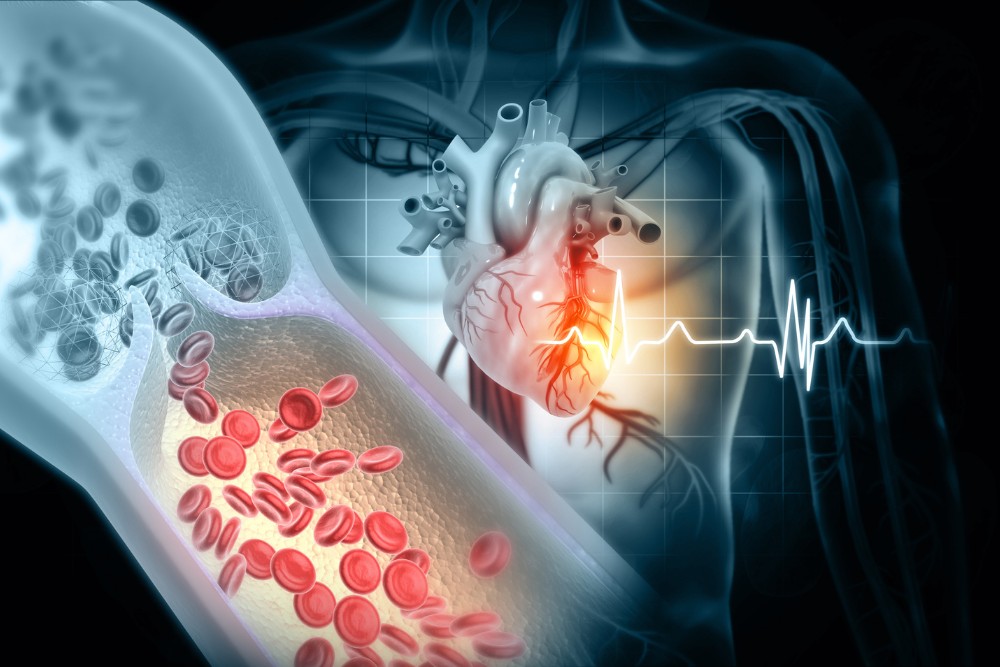How to Recognize Early Warning Signs of Sudden Cardiac Death

Sudden cardiac death (SCD) is a devastating event that occurs when the heart unexpectedly stops beating, usually due to a dangerous arrhythmia. It can strike without warning, even in the presence of a prior diagnosis of heart disease, often leaving families in shock and grief.
Recognizing the early warning signs of sudden cardiac death and knowing how to assess your risk can be lifesaving. Though not every case is preventable, early intervention and awareness can significantly reduce the likelihood of a fatal event.
What Does Sudden Cardiac Death Look Like?
Sudden cardiac death happens when the heart’s electrical system malfunctions, causing an arrhythmia that prevents effective blood pumping. The most common rhythm disturbance is ventricular fibrillation, a chaotic electrical activity that causes the heart to quiver instead of beat.
Unlike a typical heart attack, which often has warning signs like chest pain, sudden cardiac arrest occurs with little or no warning. It can affect people at rest, during exercise, or even in their sleep. Once the heart stops, the person quickly becomes unresponsive and stops breathing, leading to sudden cardiac death.
The event usually progresses in the following stages:
- Sudden collapse
- Loss of consciousness
- No pulse or breathing
- Death within minutes without immediate medical intervention
What Are the Warning Signs of SADS?
Sudden arrhythmic death syndrome (SADS) refers to cases where a seemingly healthy person dies suddenly due to a cardiac arrhythmia, often with no structural abnormalities found on autopsy.
SADS is especially common in young people and athletes and is frequently linked to inherited electrical disorders like long QT syndrome or Brugada syndrome.
While many cases of SADS occur without obvious arrest symptoms, some subtle warning signs may appear in advance:
● Fainting or unexplained syncope, especially during exercise or emotional stress
● Seizure-like activity that is cardiac in origin
● Palpitations or fluttering sensations in the chest
● Shortness of breath during light activity
● Chest pain unrelated to exertion
● Abnormal vital signs, such as rapid heart rate or low blood pressure, especially when unexplained
● Family history of unexplained sudden cardiac death under age 50
How Do You Test for Sudden Death Syndrome?
If a doctor suspects you’re at risk for sudden cardiac arrest or SADS, a thorough evaluation is critical. Testing typically includes:
- Electrocardiogram (ECG or EKG)
Records the heart’s electrical activity and can reveal abnormalities like prolonged QT interval or Brugada pattern.
- Echocardiogram
An ultrasound of the heart checks for structural problems such as thickened heart muscle or weak pumping function.
- Exercise Stress Test
Monitors how the heart responds to physical activity and can uncover arrhythmias triggered by exertion.
- Holter Monitor or Event Recorder
Portable devices are worn for 24 hours or more to detect intermittent arrhythmias not captured during a short ECG.
- Genetic Testing
Recommended if there’s a strong family history of sudden cardiac death or if an inherited arrhythmia syndrome is suspected.
- Cardiac MRI or CT Scan
Advanced imaging to assess for structural defects that might not show up on an echocardiogram.
- Electrophysiology (EP) Study
An invasive test is used in select patients to provoke and study abnormal heart rhythms under controlled conditions.
Testing can help confirm a diagnosis, assess your risk factors, and guide treatment plans, including whether you may need medication, lifestyle changes, or an implantable cardioverter-defibrillator (ICD).
What Is the Most Common Cause of Sudden Cardiac Death?
The most frequent cause of sudden cardiac death varies by age group.
In older adults, the leading cause is coronary artery disease (CAD). A heart attack can trigger ventricular fibrillation, leading to sudden death if not treated immediately.
In younger individuals, including teens and young adults, the most common causes are genetic conditions, such as:
● Hypertrophic cardiomyopathy (HCM): A thickened heart muscle that disrupts electrical signaling.
● Long QT syndrome: A disorder that affects the heart’s ability to repolarize after each beat.
● Brugada syndrome: A rare but dangerous arrhythmia condition.
● Arrhythmogenic right ventricular cardiomyopathy (ARVC): A condition that replaces healthy heart muscle with a scar or fatty tissue.
● Heart failure: In some cases, undiagnosed or advanced heart failure can contribute to the development of fatal arrhythmias.
Common Questions About Warning Signs and Response
What is the most important first step if I witness someone collapse from sudden cardiac arrest?
Call 9-1-1 immediately. This is your critical first action before attempting CPR or looking for an AED. Emergency medical services need to be dispatched right away because:
- Professional medical equipment and medications are required to restore normal heart rhythm
- Brain damage can begin within 4-6 minutes without oxygen
- Even if CPR and AED use are successful, the person will still need emergency medical care
- Emergency dispatchers can provide real-time CPR guidance over the phone
Remember: Call first, then start CPR and use an AED if available.
Why should I pay attention to nausea and vomiting as potential warning signs?
Nausea and vomiting can be important early warning signs of sudden cardiac death that are often overlooked. These symptoms are particularly significant because they’re easily dismissed – people often attribute nausea to food poisoning, stress, or other common causes. However, when nausea appears alongside chest discomfort, shortness of breath, or dizziness, it strengthens the case for seeking immediate medical attention. For some people, especially women, nausea may be the primary symptom rather than classic chest pain. This occurs because the heart’s distress can trigger the body’s emergency systems, affecting the digestive system as part of a broader stress response. If you experience unexplained nausea or vomiting, especially with any other potential cardiac symptoms, don’t wait – seek medical evaluation immediately.
This is a medical emergency – but how urgent is it?
Sudden cardiac arrest is the most urgent medical emergency possible, and every second truly counts. Without intervention, sudden cardiac arrest is fatal in 4-6 minutes, leaving no second chances unlike other medical emergencies where you might have hours to respond.
For every minute that passes without CPR and defibrillation, survival rates drop by 7-10%, making time the most critical factor. Even if the person survives, delayed response can result in irreversible brain damage that affects them for life. This emergency is more urgent than a heart attack, stroke, or most other medical conditions – you must act immediately because there is no time to wait and see if symptoms improve.
Final Thoughts
Sudden cardiac death is a silent threat, but in many cases, it doesn’t have to be a surprise. Subtle warning signs, family history, and comprehensive cardiac evaluation can help identify those at risk before tragedy strikes. By raising awareness and promoting early screening, we can turn the tide against this often preventable cause of cardiac death.
If you or a loved one has experienced fainting, unexplained cardiac symptoms, or has a family history of sudden death, don’t wait, talk to a cardiologist and explore appropriate testing. With the right information and proactive care, sudden cardiac death doesn’t have to live up to its name.


